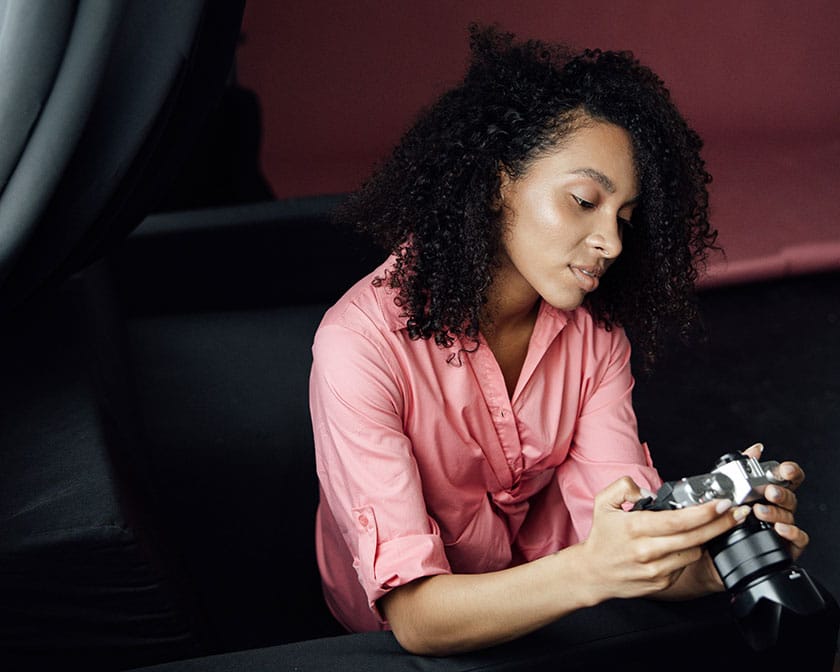Fighting photography theft online.
February 25th, 2022
In our age of digital sharing, it’s easier than ever for people to illegally use copyrighted images. As a photographer, it can be extremely frustrating to not receive compensation for your work and to have your intellectual property stolen and misused.
The good news is you can learn how to protect the photos you share online. First, let’s get into what is actually meant by copyright.
What does copyright mean?
Copyright is the exclusive legal right to a work of authorship, including photographs. The copyright holder is the only person who can reproduce an image, publicly display it, distribute it, or create derivatives of the image.
As a general rule, the moment you take a picture you become the copyright holder for that image. Whether you put that image up on your portfolio website, blog, Instagram, or anywhere else online, other’s don’t have the right to use it without permission.
What is copyright infringement?
Copyright infringement refers to the unauthorized use of an image that is protected by copyright. The internet has made it easier than ever to share your work as a photographer, but it’s often just as easy for that work to be downloaded and used without permission or license.
Some common examples of copyright infringement include:
- Reproduction of an image that you have made publicly available. While posting to social media can often give some limited usage rights to the social media platform itself as per their terms of service, these rights don’t extend to third parties (a.k.a. other users on the platform).
- Derivative works using your photo. Your work doesn’t have to be reproduced in full for it to count as copyright infringement. If someone edits a portion of your image and uses it to create a new image, that still counts as photograph copyright infringement.
- Misuse of your stock imagery. If you sell your images on a stock photography website, your photos can only be used in the ways outlined by your license. Using them for an unlicensed purpose still counts as copyright infringement, even if a customer paid a licensing fee for your image.
Simply crediting a photographer isn’t enough to avoid copyright infringement. You may have had the experience of coming across your own work on a website or blog shared along with credit. While the infringer probably wasn’t aware they were breaking copyright law, this is a form of copyright infringement.
Image copyright laws.
In the United States image copyright is protected under the Copyright Act. Many other countries have similar copyright laws for photographers. Under U.S. copyright law you automatically own the copyright to a picture the moment that you take it. This means that as soon as you release the shutter to snap a photo, that image is instantly protected by copyright law without you having to go through extra steps to protect it.
There are a couple of exceptions to this rule that are worth mentioning. The first is work-for-hire. A work-for-hire situation occurs when the photographer is an employee and is taking images for their employer. For example, if you are an employee of a magazine, they hold the copyright for any images you take in your capacity as a photographer for the publication. This only applies if you are employed by the company and does not include freelance photographers or externally hired content creators.
The other exception is if you sign a contract stating that the pictures you take for a job will be considered work-for-hire. This is rare, and most of the time you will license the images you take for a client to them rather than handing over the copyright altogether.
How do image copyright laws work on the internet?
Despite the fact that it’s easier to reproduce images illegally on the internet with a right-click, the same rules apply online as in the analog world. Your images are protected, by law, from unauthorized use or reproduction on the internet and in print form, just as they would be anywhere else.
How to copyright a photo.
You automatically hold the copyright to an image you create as soon as you take it in most situations. However, you can also register your copyright formally with the U.S. copyright office. This is optional, but it can come in handy in the event of an infringement of your work.
If you come across an instance of copyright infringement and you haven’t registered your image with the U.S. Copyright Office in advance, you will be able to recover actual damages rather than statutory damages.
Actual damages are calculated as the amount of demonstrable loss to you, the copyright owner, as a result of the copyright infringement. This can be calculated based on lost sales and licensing fees or any other loss that you can prove. Actual damages can be subjective and difficult to calculate correctly.
Statutory damages are meant to overcome some of the ambiguity of determining actual damages. They can be anywhere from $700 to $30,000 per copyright infringement, with the amount being calculated based on the seriousness of the infringement and the infringer. For example, a large corporation with deep pockets would likely pay a high fee for infringing on copyright. Statutory damages also typically cover legal fees. To qualify, you should register your images within three months of creating them or before any infringing act.
It likely won’t make sense to register every image you take, but you may want to do so for those that you think could be at greater risk of being used illegally. You can register your images through the U.S. Copyright Office website.

How do photographers protect their photos?
Despite the protection offered by the Copyright Act, copyright is illegally broken all the time. It can be difficult to track down and enforce infringements. It’s not uncommon to wonder how to protect the images on your website.
Luckily, there are steps you can take as a photographer to protect photos you share online. Consider taking some of these steps to reduce the chances of having your work used illegally:
- Watermark your images. Your watermark will usually be your name or the name of your business. While a committed infringer may be able to use Photoshop to remove your watermark, most casual internet users won’t know how to do that. Using a photography website that allows you to upload and automatically add your watermark to images will simplify this part of your workflow.
- Upload your images at a lower resolution. Avoid uploading high-res files when posting images to your portfolio website. This way, while your images could be saved and posted elsewhere online, they won’t be large enough to be useful to anyone who wanted to print them.
- Look for websites that prevent right-click saving.
- Password-protect your client galleries so they can’t be accessed by anyone except your intended audience.
Each of these steps can help you protect images you share online.
How to avoid copyright infringement on photos.
In addition to using watermarks, uploading low-res photos, using password protection where available and preventing right-click saves, it can also help to simply remind people that your images are protected.
Most people, even many photographers, don’t have a good understanding of how copyright applies to photography. We’re so accustomed to images being reproduced and shared online that many, especially casual internet users, may have no knowledge that they’re breaking copyright law when they share an image.
Of course there are also many cases of intentional infringement, but you can avoid the most common kind by reminding visitors to your site that your images are protected. Creating a pop-up reminder, or using a Copyright notice, can be an effective way to let visitors know that your images are legally protected. A copyright notice typically includes the © symbol followed by the year and your name.
What can you do if your photos have been stolen?
In the event that your photos are stolen, your next steps will likely depend on the severity of the copyright infringement.
If you find your image on a personal blog where it isn’t being used for any kind of commercial gain, it is often best to start with getting in touch with the site owner and asking them to take down the image, or negotiate a rate for them to continue to use the image. If they weren’t aware that they were infringing on copyright law, the fear of further action if they don’t remove the image will likely be enough to have them take it down.
If that doesn’t take care of the issue, you have the option to take further action such as filing a DMCA notice, or sending a cease and desist letter. DMCA stands for Digital Millennium Copyright Act, and DMCA notices are a tool for copyright holders to enforce their rights on the internet.
Image sharing sites typically have their own rules for how to go about filing DMCA notices, so if you find your image on one of these sites it’s a good idea to start by reading their rules. If you find them on another website, you can submit the notice to the individual or company directly.
A cease and desist letter is more commonly sent by a lawyer, making it a more costly approach to getting your photos taken down. Finally, if your images aren’t taken down, you may wish to pursue a lawsuit. This is more common if the copyright infringer is profiting off of your images.
Dealing with copyright infringement can be a very frustrating and emotionally draining experience. Many times people or companies choosing to use your images without permission will put up a fight when photographers challenge them on the infringement. In a time when image theft is so easy and so prevalent, it’s important that photographers (and all creatives) stand up for themselves to ensure they are protected and fairly compensated for the usage of their work. After all, these images are your intellectual property and a product of your creative vision and hard work.



